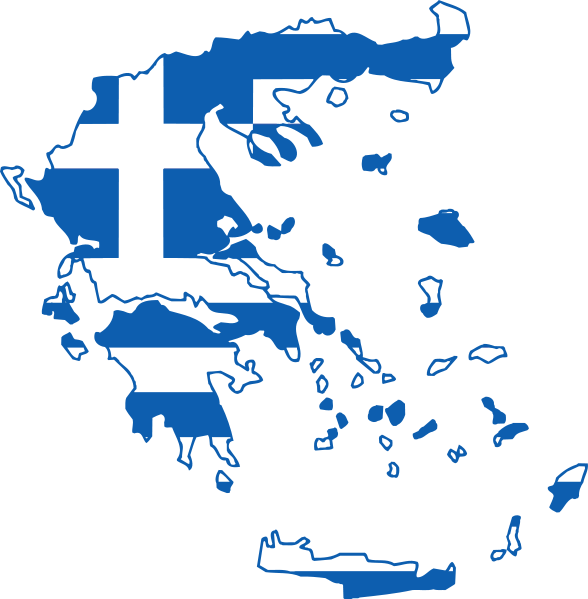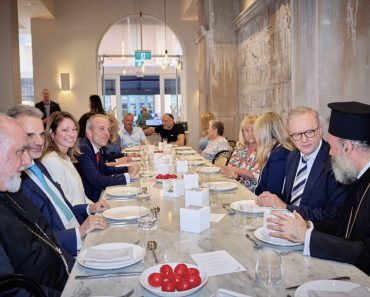It’s been 13 years since actress, singer, and producer Rita Wilson first wrote her heartfelt account of Greek Easter in 2012.
Today, her vivid recollections and unique perspective on this cherished holiday continue to touch hearts and bridge cultures. Here, in her own words, is Rita Wilson’s beloved story of what Greek Easter means to her:
Rita Wilson: My Greek Easter
Once every few years, Greek Easter falls the same week as “American Easter,” as it was called when I was growing up.
In order for “Greek Easter” to be celebrated the same week as “American Easter,” Passover has to have been observed already. We Greeks don’t celebrate Easter until after Passover, because how can you have Easter before Passover? Jesus went to Jerusalem to celebrate Passover, after all—unless, of course, the holidays align one year.
There are a few things non-Greeks might not know about Greek Easter:
We don’t do bunnies. We don’t do chocolate. We don’t do pastels.
We do roast lamb, sweet cookies, and deep red. The lamb is roasted (not chocolate!), the sweet cookies are called koulourakia and are twisted like a braid, and our Easter eggs are dyed one color only: blood red. There is no Easter egg hunt. Instead, there’s a game where you crack your red egg against someone else’s, hoping yours is the strongest—it’s believed to bring good luck.
For a Greek Orthodox, Holy Week means you clear your calendar and don’t make other plans. You’ll be in church every day; you fast, abstaining from meat and dairy, and in my family, we even gave up sodas during Lent. I remember heated debates among my kids about whether TING (a grapefruit soda) counted as a juice or soda—my then ten-year-old decided it was a soda, so we had a Ting-less Lent!
No matter where I am in the world, I never miss Easter—or, as we say, Pascha. I’ve celebrated it in Paris, London, New York, Los Angeles, and even in the humble parish church of Salinas, California.
As children, our parents would take us to all the significant Holy Week services. Now, as parents ourselves, we take our children. On Good Friday, we mourn the death of Jesus, making our cross after approaching the Epitaphio (which represents Christ’s body), kissing it, and marveling at its decoration—thousands of fragrant flowers and rose petals, and the smell of incense heavy in the air.
Some deeply devout people even crawl under the Epitaphio as an act of humility and sorrow for Christ’s death. It’s moving to witness—pure, unembarrassed faith.
At one point, the Epitaphio is carried outside—like a funeral procession—with worshippers following in candlelight. Every Greek person knows the smell of burning hair, protecting their candles and clothes with the familiar red plastic cups to catch the wax. Once in London, I turned toward a strange smell and realized it was actually my own hair smoldering!
The procession is peaceful and somber as we circle the church by candlelight, singing plaintive hymns that express both sadness and hope.
One of my favorite services is Holy Unction, on Holy Wednesday—a sacrament of healing, both physical and spiritual, preparing us for confession and communion. The priest blesses each person with holy oil, making crosses on their forehead, cheeks, chin, and hands. I always carefully collect my oil-soaked cotton ball to burn at home, never wanting to dispose of it irreverently.
The peak of Greek Easter arrives at midnight on Holy Saturday with Anastasi, the Resurrection service. We gather at church by 11 p.m., children sleepy but holding their candles. As the service builds, the lights are extinguished. Darkness. Silence. The priest lights a single candle at the altar—the light of Christ’s love—and shares it with the congregation, one by one, until the whole church glows with a sea of candles.
Then, suddenly, the priest announces, “Christos Anesti!” (“Christ is Risen!”), and the community thunders back, “Alithos Anesti!” (“Truly, He is Risen!”), singing the joyous Xristos Anesti hymn. It is an unforgettable moment of shared faith and light.
Growing up, the night continued with a grand Anastasi dinner in the church hall—breaking the long fast at 2:30 in the morning with lamb, eggs, koulourakia, music, dancing, and laughter until dawn.
These days, my family drives home after midnight, still carrying our lit candles. Sometimes, drivers are startled to spot a car full of glowing candlelight cruising down the highway. When we return, we crack eggs, eat cookies, drink hot chocolate (definitely not traditional Greek!), and I bless our home with a cross from the candle smoke above the doorway. Painters have always wondered about those smoky black crosses.
Easter Sunday brings more feasting and an outdoor picnic with family and friends.
Greeks know how to do Easter. Truly, it’s the most important, beautiful, profound holiday in our faith—more wondrous than words can capture. This is only a glimpse, a small taste, of a week that is so much deeper, richer, and filled with tradition.
But one thing is always clear: Greek Easter is powerful, beautiful, mysterious, humbling, and moving. It is about renewal, community, and faith.
And though it may be early to say it—
Christos Anesti! Alithos Anesti!
Tom Hanks and Rita Wilson attended Palm Sunday services on April 13, 2025, at Saint Sophia Greek Orthodox Cathedral in Los Angeles, marking the start of Holy Week..
First written by Rita Wilson in April 2012; now shared and beloved for 13 years.







